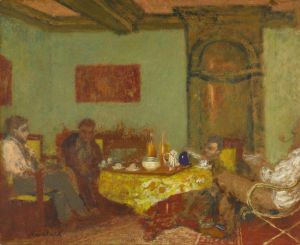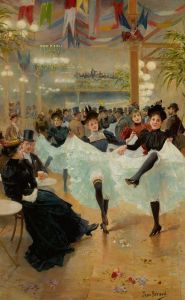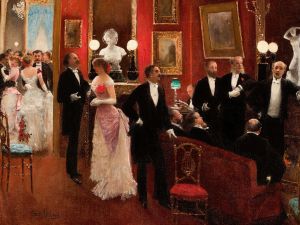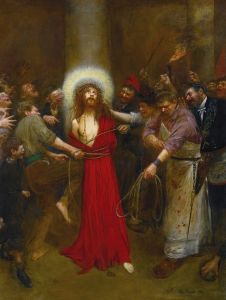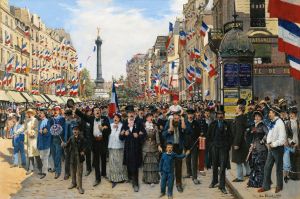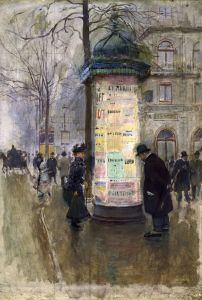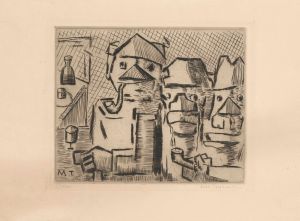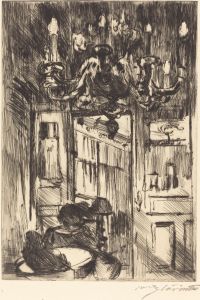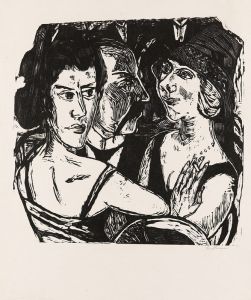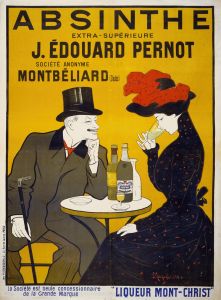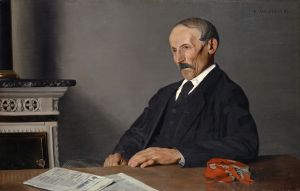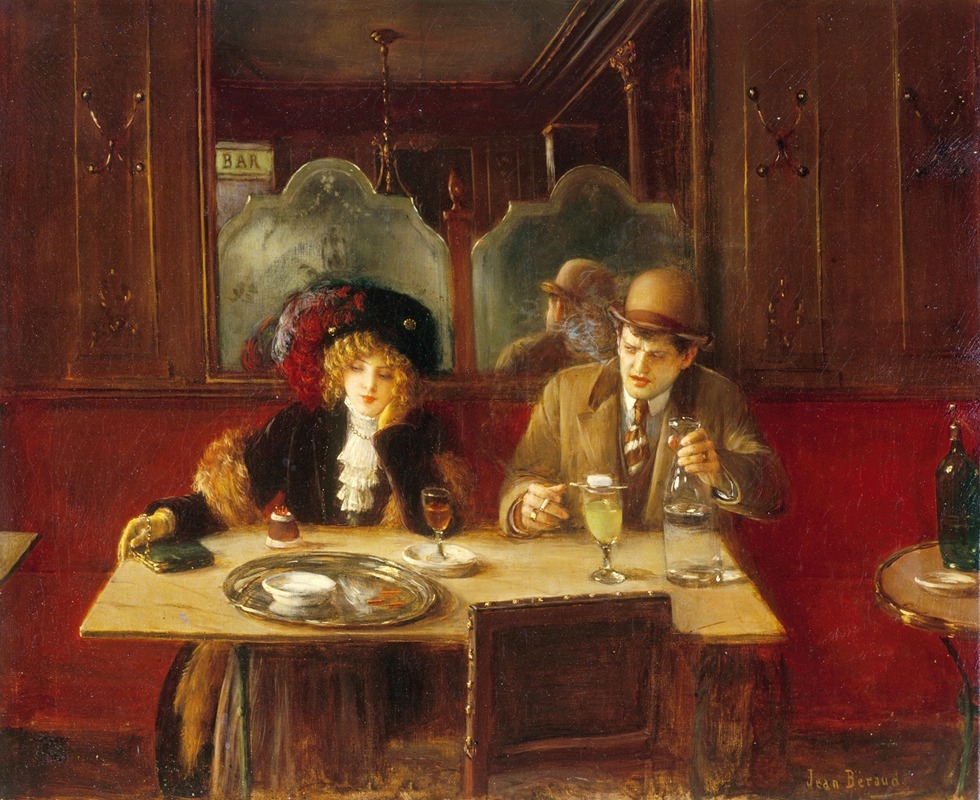
Au café, dit l’Absinthe
A hand-painted replica of Jean Béraud’s masterpiece Au café, dit l’Absinthe, meticulously crafted by professional artists to capture the true essence of the original. Each piece is created with museum-quality canvas and rare mineral pigments, carefully painted by experienced artists with delicate brushstrokes and rich, layered colors to perfectly recreate the texture of the original artwork. Unlike machine-printed reproductions, this hand-painted version brings the painting to life, infused with the artist’s emotions and skill in every stroke. Whether for personal collection or home decoration, it instantly elevates the artistic atmosphere of any space.
Jean Béraud's painting Au café, dit l’Absinthe is a notable work by the French artist, who is renowned for his depictions of Parisian life during the late 19th and early 20th centuries. Painted in 1889, this artwork captures a scene in a Parisian café, a common setting in Béraud's oeuvre, where he often portrayed the social habits and daily routines of the city's bourgeoisie and bohemian circles.
The painting depicts a man and a woman seated at a café table, with a glass of absinthe prominently placed in front of the man. Absinthe, a highly popular and controversial alcoholic beverage at the time, was often associated with the café culture of Paris and became a recurring motif in art and literature of the period. The man appears contemplative, while the woman gazes into the distance, creating an atmosphere of introspection and detachment. The subdued tones and detailed rendering of the figures and their surroundings reflect Béraud's skill in capturing both the physical and emotional nuances of his subjects.
Béraud's work is often compared to that of his contemporaries, such as Edgar Degas and Édouard Manet, who also explored themes of modern urban life. However, Béraud's style is distinct in its meticulous attention to detail and his focus on the social dynamics of Parisian society. In Au café, dit l’Absinthe, he provides a snapshot of a specific moment in time, offering insight into the cultural and social milieu of the Belle Époque.
The painting is housed in the Musée d'Orsay in Paris, which is home to a significant collection of 19th-century art. It remains an important example of Béraud's ability to blend realism with subtle social commentary, making it a valuable piece for understanding the artistic and cultural landscape of late 19th-century France.





